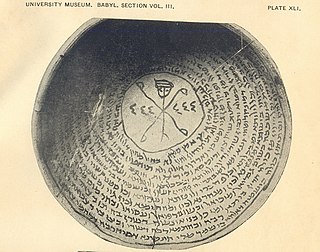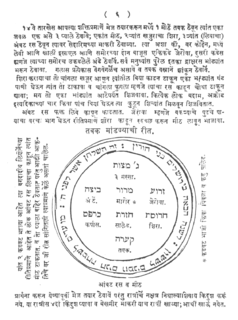 W
WJewish languages are the various languages and dialects that developed in Jewish communities in the diaspora. The original Jewish language is Hebrew, supplanted as the primary vernacular by Aramaic following the Babylonian exile. Jewish languages feature a syncretism of indigenous Hebrew and Judeo-Aramaic with the languages of the local non-Jewish population.
 W
WHebrew is a Northwest Semitic language of the Afroasiatic language family. Historically, it is regarded as the spoken language of the Israelites and of their longest surviving descendants, the Judeans and Samaritans, being preserved as the main language used in religious context in post-Temple Judaism and in Samaritanism. It is the only Canaanite language still spoken and the only truly successful example of a revived dead language, and one of only two Northwest Semitic languages still spoken, the other being Aramaic.
 W
WJewish Babylonian Aramaic was the form of Middle Aramaic employed by writers in Lower Mesopotamia between the fourth and eleventh centuries. It is most commonly identified with the language of the Babylonian Talmud and of post-Talmudic (Gaonic) literature, which are the most important cultural products of Babylonian Jews. The most important epigraphic sources for the dialect are the hundreds of inscriptions on incantation bowls.
 W
WJudeo-Marathi is a form of Marathi spoken by the Bene Israel, a Jewish ethnic group that developed a unique identity in India. Judæo-Marathi is, like other Marathi, written in the Devanagari script. It may not be sufficiently different from Marathi as to constitute a distinct language, although it is characterized by a number of loanwords from Hebrew and Aramaic as a result of influence from the Cochin Jewish community, Judæo-Malayalam and Portuguese and also some influence from the Urdu language. It has some linguistic features in common with various Jewish languages, developed by Jewish communities in widely disparate places in times, which are also variants of a local language with loanwords from Hebrew and Aramaic.
 W
WJudeo-Malayalam is the traditional language of the Cochin Jews, from Kerala, in southern India, spoken today by a few dozens of people in Israel and by probably fewer than 25 in India.
 W
WModern Hebrew, also known as Israeli Hebrew or Israeli, and generally referred to by speakers simply as Hebrew, is the standard form of the Hebrew language spoken today. Spoken in ancient times, Ancient Hebrew, a member of the Canaanite branch of the Semitic language family, was supplanted as the Jewish vernacular by the western dialect of Aramaic beginning in the third century BCE, though it continued to be used as a liturgical and literary language. It was revived as a spoken language in the 19th and 20th centuries and is the official language of Israel. Of the Canaanite languages, Modern Hebrew is the only language spoken today.
 W
WYiddish is a West Germanic language historically spoken by Ashkenazi Jews. It originated during the 9th century in Central Europe, providing the nascent Ashkenazi community with a High German-based vernacular fused with many elements taken from Hebrew and to some extent Aramaic; most varieties also have substantial influence from Slavic languages, and the vocabulary contains traces of influence from Romance languages. Yiddish writing uses the Hebrew alphabet. In the 1990s, there were around 1.5–2 million speakers of Yiddish, mostly Hasidic and Haredi Jews. In 2012, the Center for Applied Linguistics estimated the number of speakers to have had a worldwide peak at 11 million, with the number of speakers in the United States and Canada then totaling 150,000. An estimate from Rutgers University gives 250,000 American speakers, 250,000 Israeli speakers, and 100,000 in the rest of the world.